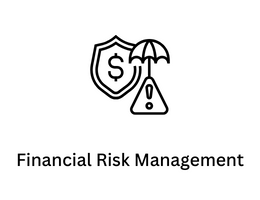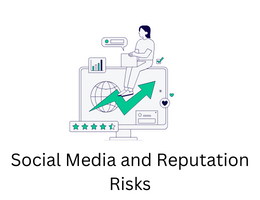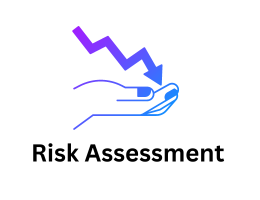
Risk and Insurance
Risk and Insurance: Types
- By admin --
- Monday, 06 Mar, 2023
Objective Risk
Ideal threat( also called the degree of threat) is defined as the relative variation of factual loss from anticipated loss.
For illustration,
Assume that a property insurer has,000 houses ensured over a long period and. On average, 1 percent, or 100 houses, burn each time. still, it would be rare for exactly 100 houses to burn each time.
In some times, as many as 90 houses may burn; in other times as numerous as 110 houses may burn. therefore there's a variation of 10 houses from the anticipated number of 100 or a variation of 10 percent. This relative variation of factual loss from anticipated loss is known as objective threat.
ideal threat declines as the number of exposures increases. More specifically, objective threat varies equally with the square root of the number of cases under observation.
In our former illustration,,000 houses were ensured, and objective threat was10/100, 10 percent.
Now assume that 1 million houses are ensured. The anticipated number of houses that will burn is now,000, but the variation of factual loss from the anticipated loss is 100.
The objective threat is now100/1000 or 1 percent. therefore, as the square root of houses increased from 100 in the first illustration to 1000 in the alternate illustration( 10 times), the objective threat declined to one- tenth of its former position.
ideal threat can be statistically calculated by some measure of dissipation, similar as the standard divagation or the measure of variation. Because objective threat can be measured, it's an extremely useful conception for an insurer or a commercial threat manner.
As the number of exposures increases, an insurer can prognosticate its unborn loss experience more directly because it can calculate on the law of large figures.
The law of large figures states that as the number of exposure units increases, the more nearly the factual loss experience will approach the anticipated loss experience.
For illustration, as the number of homes under observation increases, the lesser is the degree of delicacy in prognosticating the proportion of homes that will burn.
Subjective Risk
The private threat is defined as query- grounded on a person’s internal condition or state of mind.
For illustration,
A client who was drinking heavily in a bar may foolishly essay to drive home. The motorist may be uncertain whether he'll arrive home safely without being arrested by the police for drunk driving. This internal query is called private threat.
The impact of private threat varies depending on the existent. Two persons in the same situation can have a different perception of threat, and their geste may be altered consequently.
still, that person’s geste may be affected, If an individual gests great internal query concerning the circumstance of a loss. High private threat frequently results in conservative and prudent geste , while low private threat may affect in lower conservative geste .
For illustration, a automobilist preliminarily arrested for drunk driving is apprehensive that he has consumed too important alcohol. The motorist may also compensate for the internal query by getting someone differently to drive the auto home or by taking a hack.
Another motorist in the same situation may perceive the threat of being arrested as slight.
This alternate motorist may drive in a more careless and reckless manner; a low private threat results in lower conservative driving geste .
In the walks of lives, mortal beings are constantly running colorful types of threat every day, every moment.
The entourages are just a many exemplifications to emphasize how all types of mortal conditioning are getting hovered by the operation or pitfalls and uninvited and unlooked-for contingencies
- A man crossing the road is running the threat of being knocked down by a moving auto.
- A house proprietor is running the threat of loss or damage to his house or property therein by fire or burglary.
- A businessman or an industrialist, or a shopkeeper is running the threat of analogous types of colorful unlooked-for contingencies.
- A trafficker is running the threat of colorful maritime threats.
- An association handling plutocrat matters is running the threat of possible defalcation by workers as well as a loss by outside culprits.
- People are running the threat of incurring arrears for their wrong deeds.
- A dependent family is running the threat of fiscal bankruptcy arising out of the unseasonable death of the breadwinner.
The risk is, therefore, incidental to life. Some people live dangerously others exercise extreme caution.
Nevertheless,
The passing of a fortuitous event or element can not be avoided, although its goods may be moreover good or bad.
Some fortuitous events are of course profitable, but some are not. The study of threat operation primarily deals with these fortuitous events and their impacts.
In this study, certain languages are needed to be duly understood because of their differences with each other and at the same time because of their necessary operation.





